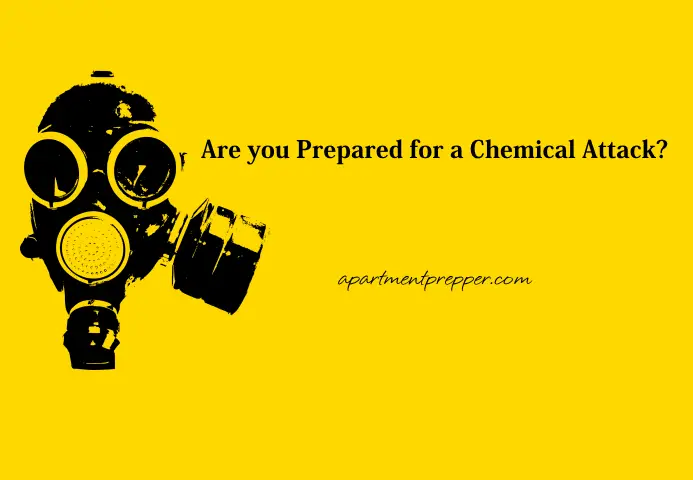This post is by Bernie Carr, apartmentprepper.com
I read an article in Newsweek that the Department of Homeland Security is planning drills to simulate chemical warfare this month.
According to the article, DHS is planning to release inert chemicals into the atmosphere near an abandoned school in Newkirk, Oklahoma. The purpose of the drill is to determine how these chemicals travel when airborne, and whether they can enter structures where people may be sheltering during an attack. The agency assures the town that the chemicals to be released are harmless to humans and the environment, however, the residents are fearful of possible ill effects.
Reading this article, I realized we have not discussed preparedness against chemical attack. It may seem far-fetched, but chemical attacks have happened. You may recall the 2003 ricin letters and the occurrence in April 2013. Even more recent were the attacks in Syria.
How do you prepare for a chemical attack?
Although there are different types of chemicals, in general, these are the steps to take, according to the DHS:
If the release is inside a building or a closed space, you should:
1. Find clean air as quickly as possible: exit the building if you can do so without
passing through the contaminated area or break a window to access clean air.
2. Remove outer clothing and place it in a sealed plastic bag.
3. Wash with soap (preferably liquid) and water. Flush skin with lots of water; flush
eyes with water if they are irritated.
4. Put on clean clothes.
5. Get medical attention if you have been exposed, even if there are no immediate
symptoms.
If you are near an outdoor chemical release, you need to:
1. Avoid any obvious plume or vapor cloud.
2. Walk away from the site and into a building in order to shelter-in-place.
3. Bring family and pets inside.
4. Lock doors, close windows, air vents, and fireplace dampers.
5. Turn off fans, air conditioning, and forced air heating systems.
6. Go into a room with as few windows as possible. Seal the room to
create a temporary barrier between people and the contaminated
air outside.
7. Seal all windows, doors, and air vents with plastic sheeting and
duct tape.
8. Improvise with what is on hand to seal gaps to create a barrier from
any contamination.
9. Watch TV, listen to the radio, or check the Internet often for official
news and instructions as they become available.
Source: DHS.gov, “CHEMICAL ATTACK, WARFARE AGENTS, INDUSTRIAL CHEMICALS, AND TOXINS Fact Sheet”
If you were to shelter in place, you would be confined to one area in your home and you would need your emergency supplies on hand such as water, food, hygiene, communications and lighting supplies.
For more information, see the Red Cross Fact Sheet on Shelter in Place
CDC’s Plan for Preparedness and Response
Also, check out https://texashelp.tamu.edu/browse/by-type/violence-terrorism/chemical-attacks/
Preparedness Supplies for a Chemical Attack
This is a general list, as there is no way to ascertain what type of chemical, or means of release you are preparing for. However, it is safe to say you will need to hunker down or shelter in place.
- Several weeks worth of water and food
- Disposable gloves
- Disposable masks
- Plastic sheeting
- Duct tape
- Soap
- Garbage bags
- First aid kit
- Hygiene supplies including toilet paper, sanitary supplies, bleach, antibacterial lotion etc.
- Reactive skin decontamination lotion (RSDL)
A chemical attack is not the only threat involving hazardous substances. Neighborhoods that are built close to industrial areas always have the risk of chemical agents being released into the air accidentally. This is not as rare as you would imagine. Recently, chemicals from a plant were released into the air in Houston, due to the loss of power during Hurricane Harvey.
© Apartment Prepper 2018


